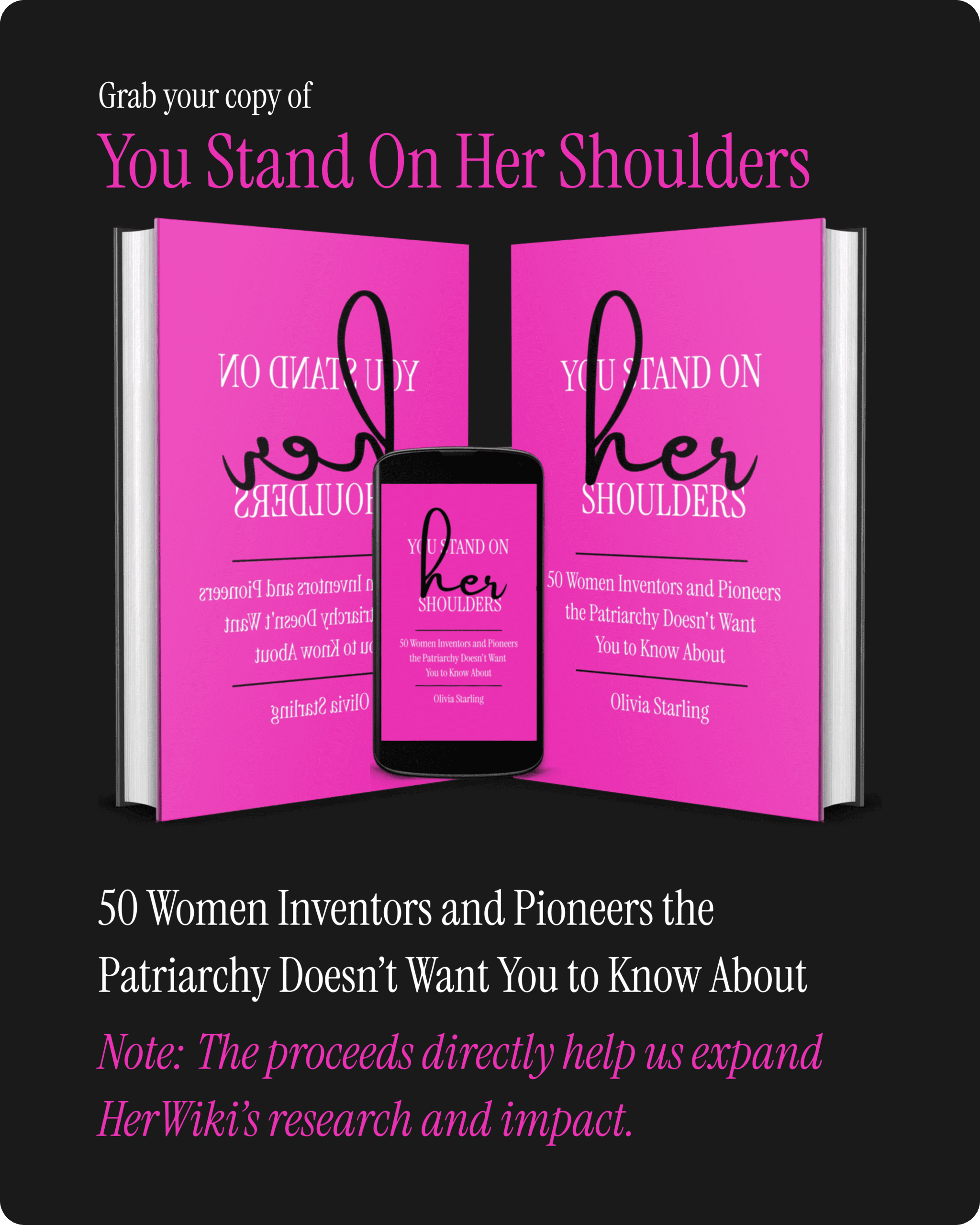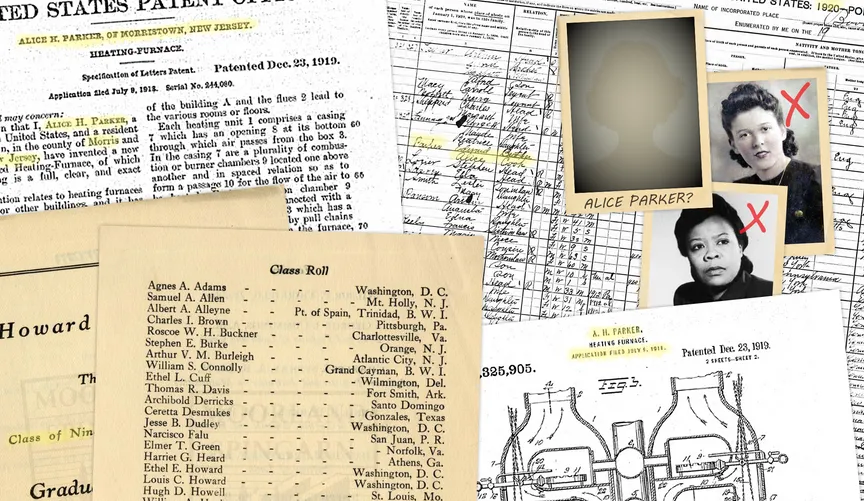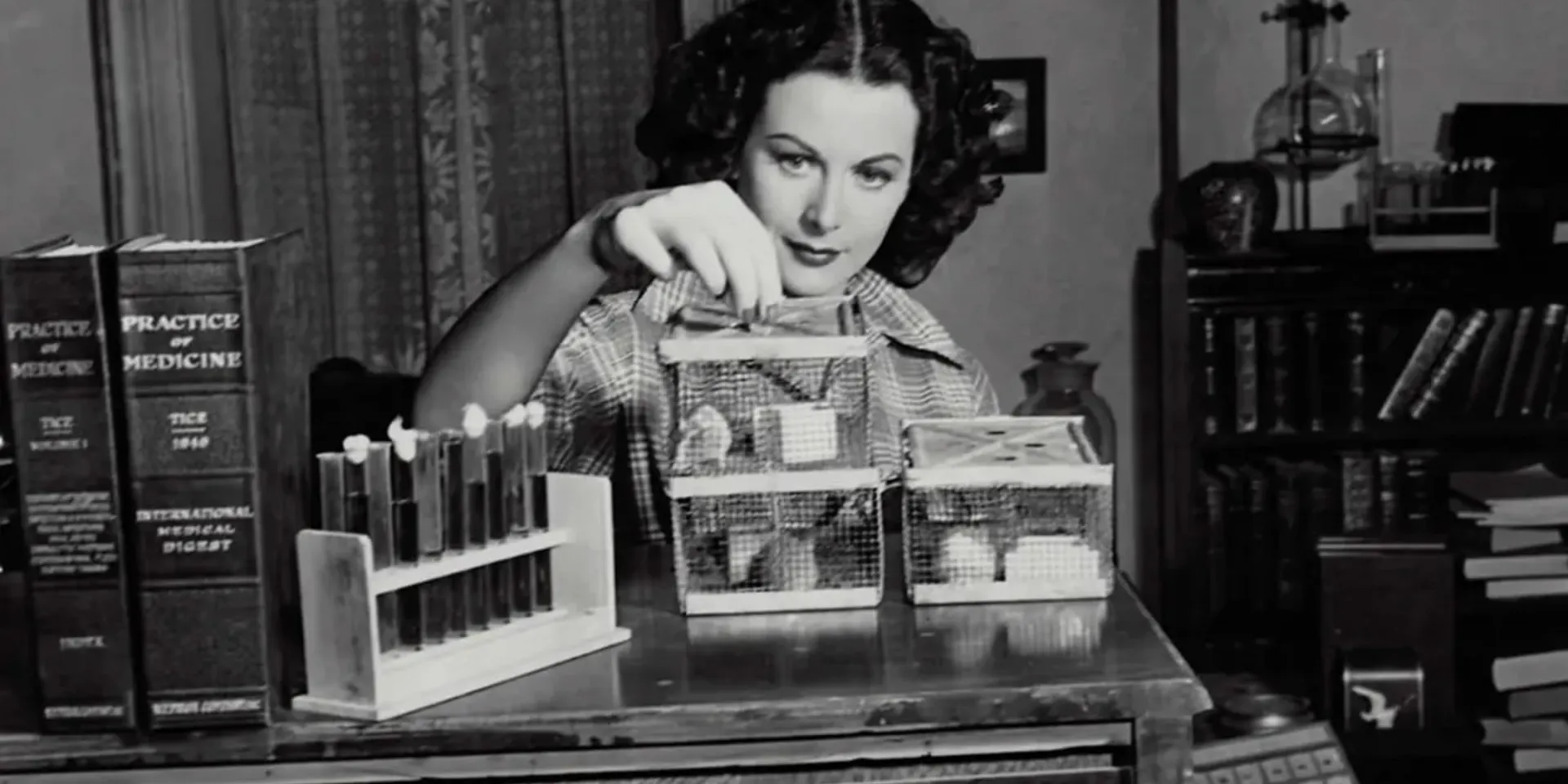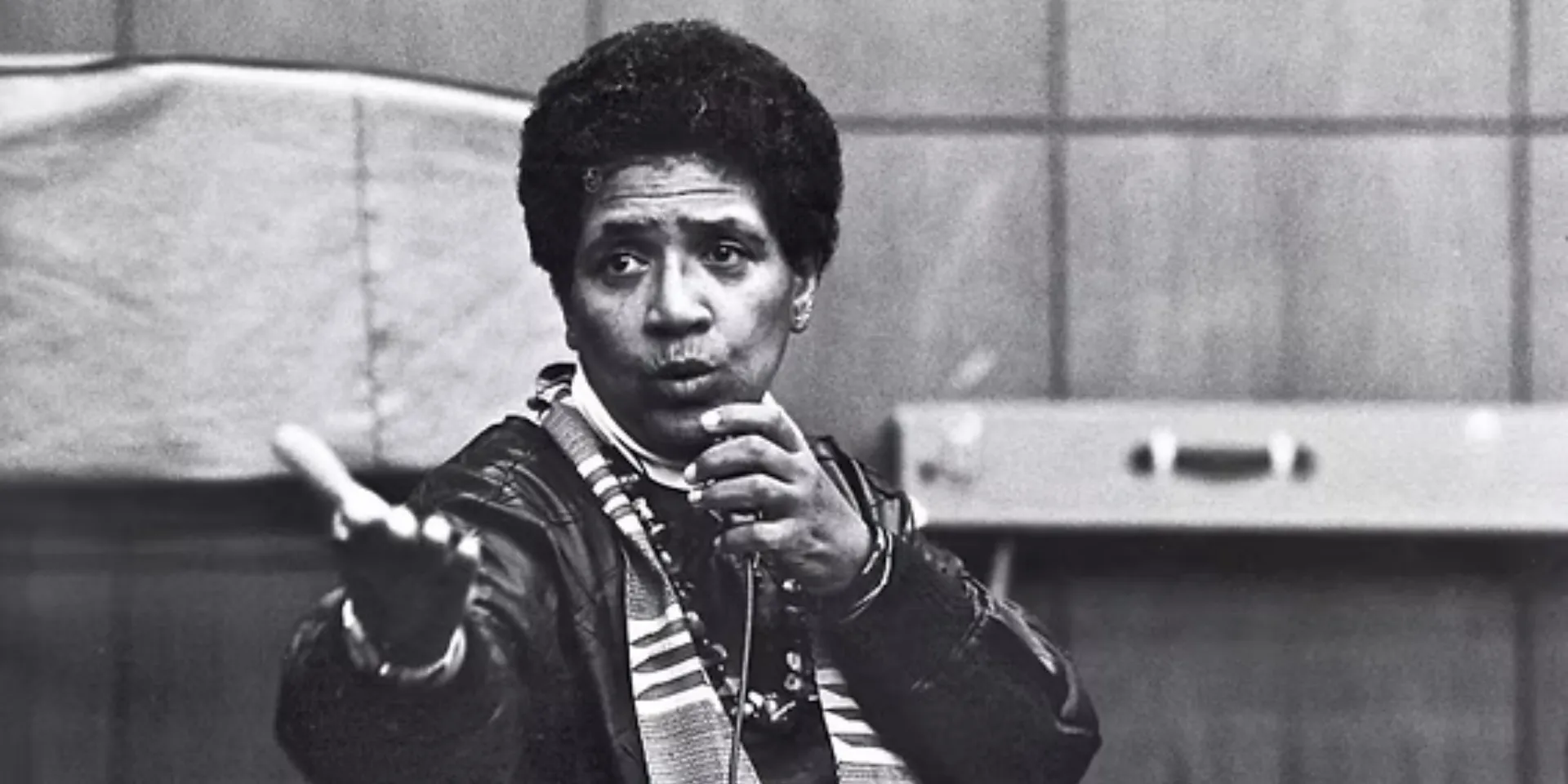Contents
ToggleOn May 12, 1960, in a medical clinic in Casablanca, Morocco, a 25-year-old British woman underwent a seven-hour surgery that would change her life and eventually force an entire legal system to examine its most basic assumptions about gender and identity. April Ashley emerged from that operating room as one of the first British people to have gender confirmation surgery. What she did next would make her a lightning rod for controversy, a fashion icon, and ultimately a pioneer who opened doors for future generations of transgender people.
Ashley’s journey from a troubled childhood in Liverpool to becoming a successful London model reads like fiction. But her real achievement was surviving in plain sight during an era when transgender people were criminalized, pathologized, and ostracized. She built a life in the public eye while fighting legal battles that would establish precedents still cited in courtrooms today. Her story reveals how one woman’s refusal to disappear forced British society to confront questions about gender, identity, and human dignity that it preferred to ignore.
Growing Up Different in Working-Class Liverpool
April Ashley entered the world as George Jamieson on April 29, 1935, at 126 Smithdown Road in Liverpool, but her journey would take her far beyond the working-class streets where she was born. Born to Frederick Jamieson, a Roman Catholic father, and Ada Brown, a Protestant mother, she was one of six surviving children in a family that struggled with both poverty and religious differences.
From her earliest memories, April knew something was different about her. Growing up in 1940s Liverpool meant strict gender roles and expectations, but the child assigned male at birth felt trapped in the wrong body. This wasn’t just childhood confusion – it was a profound understanding that would shape her entire life.
Her childhood was marked by illness and isolation. Calcium deficiency required weekly injections at Alder Hey Children’s Hospital, turning medical visits into a regular part of her routine. The bed-wetting that plagued her early years led to her being given her own box room at age two when the family moved house. This physical separation from her siblings created emotional distance that would last throughout her childhood.
The Liverpool of April’s youth was a tough port city still recovering from the Depression. Working-class families like the Jamiesons lived in cramped terraced houses where privacy was impossible and everyone knew everyone else’s business. For a child struggling with gender identity in such an environment, every day brought new challenges and potential humiliation.
The Escape to the Sea
At sixteen, April joined the Merchant Navy in 1951, seeking escape from a life that felt increasingly unbearable. The decision wasn’t about adventure or career prospects – it was about survival. The all-male environment of the merchant ships might seem like the worst possible choice for someone struggling with gender identity, but it offered something Liverpool couldn’t: anonymity and distance from family expectations.
Life at sea was brutal. The work was physically demanding, the conditions harsh, and the culture aggressively masculine. April struggled to perform the role expected of a young man while her internal reality screamed against every moment of the performance. The cognitive dissonance became unbearable.
The suicide attempts that followed weren’t cries for help – they were serious efforts to end a life that felt impossible to live. The first attempt led to a dishonorable discharge from the Merchant Navy. When authorities discovered what she’d done, they treated her not with compassion but with contempt. Mental health support in 1950s Britain was primitive at best, and for someone dealing with gender dysphoria, it was completely non-existent.
The second suicide attempt resulted in her being sent to Ormskirk District General Hospital’s psychiatric unit at age seventeen. The psychiatric treatment of the era focused on forcing people to conform to social norms rather than addressing their actual distress. Doctors tried to “cure” her of what they saw as delusions or perversions, using methods that would be considered torture today.
The London Underground
After leaving the hospital, April made her way to London in the mid-1950s. The capital offered opportunities that Liverpool couldn’t – not just for work, but for finding others like herself. London had an underground community of people who didn’t fit conventional gender categories, though it existed in the shadows and constant fear of police raids.
She found lodging in a boarding house that she would later claim was shared with John Prescott, the future deputy prime minister. Whether this detail is true or embellished, it captures the randomness of life in 1950s London, where people from vastly different backgrounds might share cheap accommodation while pursuing their dreams or simply trying to survive.
It was in London that April first began cross-dressing openly, at least in certain safe spaces. The city had a handful of clubs and pubs where gender non-conforming people could gather, though these venues were constantly under threat of closure and their patrons risked arrest, violence, and public humiliation.
The psychological relief of finally being able to present as female, even temporarily, was profound. For the first time in her life, April experienced moments where her external appearance matched her internal identity. These glimpses of authenticity made the return to male presentation even more painful, creating a cycle of euphoria and despair.
Paris and Le Carrousel
By the late 1950s, April had saved enough money to travel to Paris, where she’d heard about Le Carrousel, a nightclub that featured performers who were assigned male at birth but performed as women. Paris in the 1950s had a very different attitude toward gender and sexuality than Britain. While not exactly accepting, French culture had a long tradition of cabaret and performance that created space for gender non-conformity.
At Le Carrousel, April adopted the stage name Toni April and found a community that understood her in ways no one in Britain ever had. The other performers weren’t just men in dresses – many were, like April, people who lived as women full-time or were in various stages of medical transition. For the first time, she met people who had undergone the surgery she desperately wanted.
The star of Le Carrousel was Coccinelle, who had undergone sex reassignment surgery and become a celebrated performer. Coccinelle’s success showed April that transition was possible and that life as a woman wasn’t just a fantasy. This representation mattered enormously – seeing someone who had successfully made the journey she wanted to make gave April hope and practical information.
Working at Le Carrousel meant more than just performing. It meant learning how to move, speak, and present as a woman in ways that would allow her to navigate the world safely. The other performers taught her everything from voice modulation to walking in heels to applying makeup that would last through a two-hour show under hot lights.
The Life-Changing Surgery
By 1960, April had saved £3,000 – an enormous sum for someone from her background, equivalent to several years’ wages. This money represented years of scrimping, saving, and denying herself basic pleasures. Every franc saved brought her closer to the surgery that would align her body with her identity.
On May 12, 1960, April underwent seven hours of sex reassignment surgery in Casablanca, Morocco, performed by Dr. Georges Burou. The choice of Casablanca wasn’t random – Dr. Burou was one of the few surgeons in the world performing these procedures, and Morocco’s medical regulations were less restrictive than those in Europe.
The surgery was extensive and the recovery excruciating. All her hair fell out – a side effect of the massive physical trauma and hormonal changes. The pain was beyond anything she had experienced, and there were moments when she wondered if she would survive. Medical care in 1960 Morocco was basic, and post-operative infections were a constant threat.
But the surgery was successful. When April finally healed and looked at herself in the mirror, she saw the woman she had always known herself to be. The physical and emotional relief was profound. For the first time in her twenty-five years, her body felt like home rather than a prison.
The Glamorous Model
Returning to Britain after her surgery, April Ashley was reborn – not just medically but socially. She had left as one person and returned as another, ready to build the life she had always dreamed of. With her striking features and elegant bearing, she quickly found work as a fashion model in London’s competitive industry.
Her success was remarkable. By 1961, she was appearing in British Vogue, photographed by David Bailey, one of the most celebrated photographers of the era. She moved in fashionable circles, attending parties with artists, actors, and intellectuals who had no idea about her history. For a brief moment, she was simply April Ashley, successful model and London socialite.
The film role in “The Road to Hong Kong” with Bing Crosby and Bob Hope represented the peak of her mainstream success. Though small, the part put her on screen with two of the biggest stars in entertainment. She was living a life that would have been unimaginable to the child in Liverpool who had felt so trapped and hopeless.
But this glamorous existence was built on a secret that made every interaction potentially dangerous. Britain in the early 1960s had no legal recognition of gender transition. In the eyes of the law, April was still male, regardless of her surgery, her appearance, or her lived reality. This legal fiction created constant anxiety about discovery and exposure.
The Betrayal and Public Outing
In 1961, a friend sold April’s story to The Sunday People newspaper. The betrayal was complete and devastating. This wasn’t just gossip – it was the deliberate destruction of the life she had built. The friend who exposed her knew exactly what the consequences would be in an era when being transgender was seen as perverted, criminal, or insane.
The Sunday People ran the story with all the sensationalism expected of a tabloid, treating April’s life as a freak show for public consumption. Overnight, she went from successful model to public spectacle. The modeling jobs disappeared immediately. Her credit in “The Road to Hong Kong” was removed. Friends distanced themselves to avoid association with the scandal.
The public reaction was vicious. April received death threats and faced violence on the streets. People who had admired her beauty and style now treated her as a dangerous deceiver. The psychological impact of going from acceptance to complete rejection was devastating. Everything she had worked for, suffered for, and sacrificed for was destroyed in a single newspaper edition.
But April refused to disappear or apologize. She had lived through worse and survived. If British society wanted to treat her as a pariah, she would face them with dignity and refuse to be ashamed of who she was. This resilience in the face of public humiliation would define the rest of her life.
HerWiki is built and maintained by the support of amazing readers like you. If this story inspired you, join the cause and help us make HerWiki bigger and better.
The Marriage That Changed Law
In November 1960, before her public outing, April had met Arthur Corbett, who would later become the 3rd Baron Rowallan. Corbett was everything British society valued – Eton-educated, aristocratic, wealthy, and connected to the highest levels of power. His attraction to April was immediate and intense.
Their marriage in 1963 shocked both their social circles. Corbett knew about April’s history when they married – she had been honest with him from the beginning. But knowing intellectually and dealing with the reality of marriage proved to be very different things. The relationship quickly deteriorated as Corbett struggled with his own sexuality and the social implications of his choice.
April claimed to have had an affair with Íñigo de Arteaga y Martín, heir to the Dukedom of the Infantado, during this period. Whether true or not, the claim speaks to the complexity of her position – desired by men of the highest social standing but legally and socially vulnerable in ways they would never be.
When April’s lawyers demanded maintenance payments in 1966, Corbett’s response was nuclear. Rather than quietly agreeing to support his estranged wife, he filed suit in 1967 to have the marriage annulled on the grounds that April was legally male. He knew her history when they married, had consummated the marriage, and lived as her husband, but now used the law as a weapon against her.
The Legal Case That Defined a Generation
The case of Corbett v Corbett became one of the most significant legal decisions in British history regarding gender and marriage. The trial in 1970 put April’s most intimate details on public display. Medical experts examined her body and debated her biological status in open court. Her sexual history, her surgical details, and her psychological state were all subjected to legal scrutiny.
The judge, Justice Ormrod, ruled that April was legally male and therefore incapable of contracting a valid marriage with Corbett. The decision established the precedent that biological sex at birth determined legal gender for all purposes, regardless of any subsequent medical treatment or lived experience. This ruling would affect transgender people in Britain for the next 34 years.
The legal reasoning was particularly cruel. The court acknowledged that April lived as a woman, was accepted as a woman in society, and had undergone medical procedures to align her body with her identity. But none of this mattered to the law. In the eyes of the British legal system, she would forever be the male child born in Liverpool, regardless of her lived reality.
The personal cost of the case was enormous. Beyond the public humiliation of having her body and life dissected in court, April was left financially ruined. She had no claim to maintenance or property from the marriage. The man who had married her knowing her history was able to use that history to deny her any rights as his wife.
Years of Survival
After the trial, April faced the challenge of rebuilding her life yet again. The publicity from the case made it impossible to return to modeling or acting. She was simultaneously famous and unemployable, recognized everywhere but welcome nowhere. The aristocratic circles that had once embraced her now shut their doors.
Her retreat to Hay-on-Wye on the Welsh border represented both escape and exile. The small town known for its bookshops offered anonymity that London no longer could. But it also meant isolation from the urban communities where transgender people could find support and understanding. April was hiding in plain sight, living as herself but cut off from others who shared her experience.
The revelation in her book “April Ashley’s Odyssey” about Amanda Lear’s background created another controversy. According to April, she and Lear had worked together at Le Carrousel, where Lear performed as Peki d’Oslo. The claim that Lear was assigned male at birth was explosive, as Lear had built a career as a model and singer without publicly acknowledging any transgender history.
The falling out between April and Lear reflected the impossible positions that transgender women were forced into by social prejudice. Both had survived by crafting public personas that allowed them to navigate hostile societies. When those carefully constructed identities came into conflict, the friendship couldn’t survive the pressure.
A Second Marriage and New Beginnings
April’s marriage to Jeffrey West in the 1980s on the cruise ship RMS Queen Mary represented a new chapter. The choice of venue – a ship permanently docked in Long Beach, California – had symbolic significance. Ships had been where her journey began in the Merchant Navy, and now a ship hosted her attempt at finding love and legal recognition again.
West knew April’s history and married her anyway, not as a statement or scandal but simply as a man marrying the woman he loved. Their subsequent divorce was handled quietly and with mutual respect, showing that relationships involving transgender people could end for the same mundane reasons as any other marriage – incompatibility rather than gender panic.
Working for Greenpeace in the 1990s gave April a new sense of purpose. Environmental activism provided a cause larger than herself and a community that judged her on her contributions rather than her history. The work was meaningful and allowed her to use her intelligence and passion for something beyond mere survival.
Her later employment at an art gallery brought her back to the cultural world she had been expelled from decades earlier. While she could never return to the spotlight of her modeling days, she found satisfaction in supporting artists and facilitating beauty in a different way.
The Long Road to Recognition
The declassification of various documents in the 2000s revealed the full extent of surveillance and discrimination April had faced. Government files showed that authorities had monitored her activities, restricted her movements, and treated her as a potential threat to public order simply for existing as a transgender woman.
When April was appointed Member of the Order of the British Empire (MBE) in 2012 for services to transgender equality, it represented a complete reversal of how the British establishment viewed her. The same government that had legally denied her womanhood now honored her for advancing transgender rights. The irony was not lost on those who had followed her story.
The ceremony at which she received her MBE was particularly poignant. April, now in her seventies, stood in Buckingham Palace being honored by the very system that had caused her so much pain. Her dignity and grace in accepting the honor while acknowledging the suffering of the past showed the same strength that had carried her through decades of discrimination.
The Museum of Liverpool’s exhibition “April Ashley: portrait of a lady” from 2013 to 2015 brought her story back to the city where it began. For Liverpool to celebrate her as a notable daughter was particularly meaningful given how impossible life had been for her there as a youth. The city that had offered no space for her authentic self now proclaimed her as part of its heritage.
The Final Years
April’s later years in Fulham, southwest London, were marked by a peace that had eluded her for most of her life. Legal reforms, particularly the Gender Recognition Act of 2004, had finally given transgender people the right to legal recognition of their lived gender. The world that April had fought to exist in had finally begun to acknowledge that people like her had always existed.
Her death on December 27, 2021, at age 86, came just days before her body would have been discovered. She died at home, having survived everything British society could throw at her – legal discrimination, public humiliation, violence, and decades of struggle. She had outlived most of her tormentors and lived to see a world where transgender people, while still facing discrimination, had legal protections and growing social acceptance.
The HBO documentary “Enigma” released in 2025 has introduced April’s story to a new generation. Her life serves as a reminder of how recently transgender people had no legal rights or social recognition, and how individuals like April fought simply to exist authentically in a world that denied their reality.
The Stolen Years and Stolen Credit
What makes April’s story particularly significant is not just her personal struggle but what her life reveals about systemic discrimination. The legal system that denied her marriage rights wasn’t making a mistake – it was enforcing a worldview that refused to acknowledge transgender existence. The medical establishment that pathologized her identity wasn’t lacking information – it was maintaining social control.
April lost decades of her life to discrimination. The years she could have spent building a career, maintaining friendships, and living openly were stolen by a society that preferred she not exist. The credit for her resilience and survival belongs entirely to her, but the blame for her suffering belongs to the systems that made her life unnecessarily difficult.
Her contributions to transgender rights went beyond her legal case. By living openly after her outing, by refusing to disappear or apologize, she showed that transgender people could survive public exposure. Every interview she gave, every photograph she allowed, every story she told added to the growing understanding that transgender people were not freaks or criminals but human beings deserving of dignity.
The fact that she had to fight for recognition that cisgender people receive automatically reveals the fundamental inequality at the heart of gender discrimination. April didn’t want special treatment – she wanted the basic recognition that she was who she said she was. That this required decades of struggle, a landmark legal case, and eventual government honors shows how deeply transphobia was embedded in British society.
Legacy of a Liverpool Revolutionary
April Ashley’s legacy extends far beyond her individual story. The legal precedent set by Corbett v Corbett caused immense harm to transgender people for decades, but it also crystallized the need for legal reform. Her case became a rallying point for activists who understood that social acceptance meant nothing without legal recognition.
Young transgender people today live in a world shaped by April’s struggles. When they can change their legal documents, marry as their lived gender, and access medical care, they’re benefiting from battles that April fought and lost but that eventually led to legal reform. She didn’t live to see all the changes she hoped for, but she lived long enough to see the beginning of real progress.
Her story also challenges simplistic narratives about transgender history. April wasn’t a passive victim or a tragic figure. She was a woman who made difficult choices, took enormous risks, and built the best life she could within the constraints of her time. Her relationships, career achievements, and survival strategies show the complexity of transgender lives beyond the coming-out narrative.
The recognition April received late in life – the MBE, the museum exhibition, the honorary doctorate from the University of Liverpool in 2016 – wasn’t charity or political correctness. It was long-overdue acknowledgment of someone who had contributed to British society while that society did everything possible to exclude her.
April Ashley transformed herself from a suffering child in Liverpool to an international model to a legal pioneer to an honored elder of the transgender community. Her journey shows both the cruelty of systemic discrimination and the power of individual resilience. She didn’t just survive – she helped create a world where future generations wouldn’t have to fight the same battles she did.
Most importantly, April’s story reminds us that behind every legal case, every policy debate, and every statistical analysis about transgender rights are real people trying to live authentic lives. She wasn’t a symbol or a test case – she was a woman who wanted to be recognized as herself. That this required a lifetime of struggle says everything about the society she lived in and the changes still needed today.







